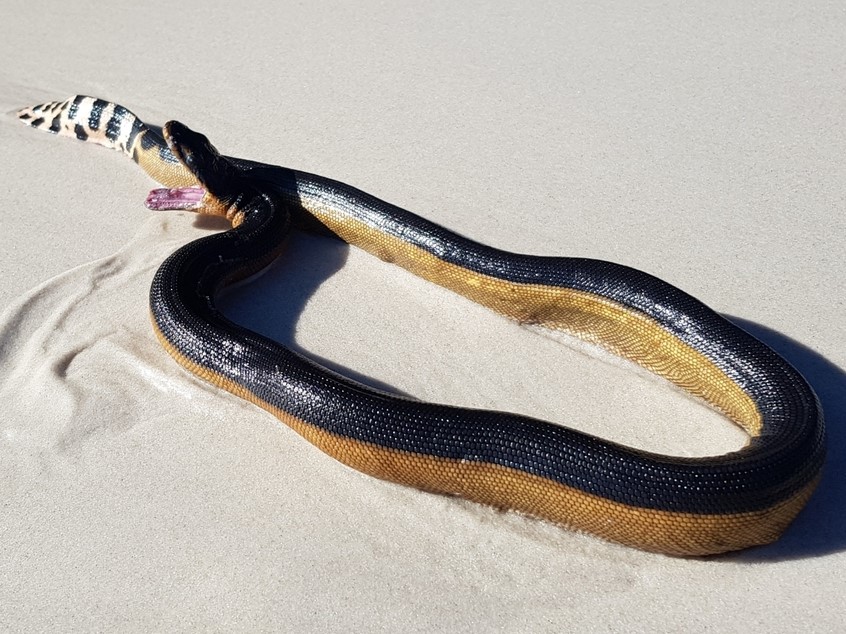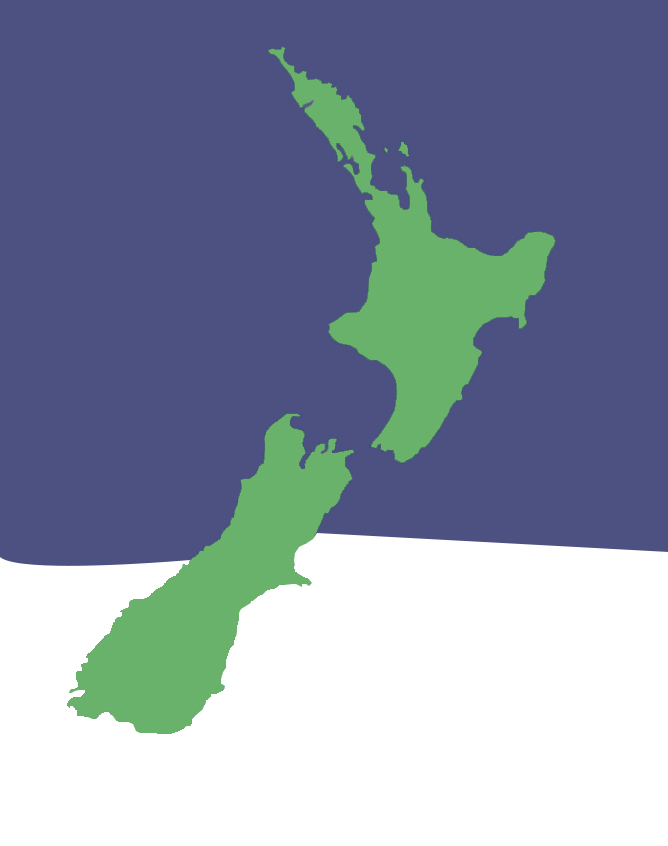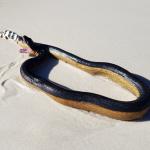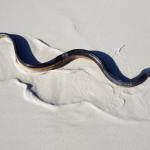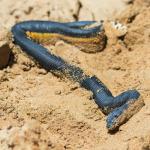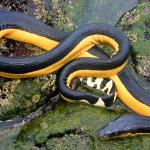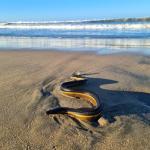- Home
- Herpetofauna Index
- Native
- Hydrophis Platurus
Hydrophis platurus
Yellow-bellied sea snake
Hydrophis platurus
(Linnaeus, 1766)
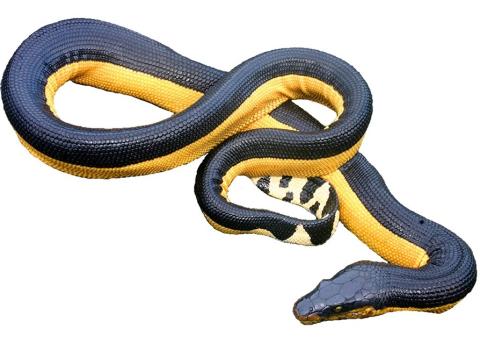
Length: Females up to 1.1 m; males up to 0.7 m.
Weight: adult weights vary from 90-240g.
Description
The yellow-bellied sea snake is Aotearoa's most commonly encountered marine snake species, likely having a year-round population in New Zealand's northern extreme - the Kermadec Archipelago. On mainland New Zealand this species is often observed beach-wrecked, having drifted into our cold waters, if encountered it is recommended that it is reported to DOC as this species is highly venomous and should not be handled by the general public.
In general, this beautiful species can be identified by its striking bicolour patterning which consists of black upper surfaces, contrasted by bright yellow underneath. The uniformly black dorsal surface begins to break up towards the paddle-like tail, which is often a pale yellow with black spots. In the eastern Pacific - especially around South America - completely yellow morphs make up a small proportion of the total population.
Unlikely to be confused with the other marine snake species which reach Aotearoa's shores due to their striking black, and yellow colouration, and drastically different body morphology.
Life Expectancy
Not known.
Distribution
The yellow-bellied sea snake is the world’s most widespread snake species occurring throughout the warm tropical pelagic waters of the Indian and Pacific oceans. New Zealand is the southernmost limit for this species in the western Pacific, with individuals recorded as far south as Wellington and Westport. It is possible that this species is resident year-round in the warm waters around the Kermadec Archipelago, but there is little evidence of this.
Ecology and Habitat
A fully-aquatic, diurnal species, that spends its entire life at sea. They are often found in association with large drift lines of flotsam that occur in the convergence zones of the ocean but can be found in more coastal habitats including the intertidal zone. Being a strong swimmer, this species spends around 87% of its time underwater, diving to depths of up to 50 metres.
Social Structure
Solitary, but have been recorded in great numbers in the drift line communities that occur in the open ocean.
Breeding Biology
Yellow-bellied sea snakes may breed in the pelagic waters in the far north of New Zealand. They are viviparous, giving birth to 1-8 live young. Sexual maturity is reached at 500mm for males and 600mm for females.
Diet
As with all snake species, the yellow-bellied sea snake is carnivorous. Primarily a piscivore it feeds on fish and cephalopods. Feeding ceases at temperatures of approximately 16-18oC and is thus a primary determining factor for their global distribution.
Disease
Yellow-bellied sea snakes have few predators but are susceptible to ocean currents which may displace them to regions that are unsuitable for survival. They are host to several reptilian diseases and parasites.
Yellow-bellied sea snakes also act as hosts for many epibionts including crabs, and barnacles.
Conservation Status
Listed as Not Threatened in the most recent threat classification for New Zealand reptiles, and as Least Concern under the IUCN criteria.
Interesting notes
Although highly venomous, they are non-aggressive, and their small size, and diet (piscivorous) means that their fangs are small and positioned near the back of the mouth, and thus it is extremely rare for envenomation to occur, furthermore it is estimated that 80% of bites do not lead to envenomation. Known cases of death have involved fishermen being bitten in thin areas of skin (such as between the fingers) when removing animals from fishing nets.
References
van Winkel, D., Baling, M., & Hitchmough, R. (2018). Reptiles and Amphibians of New Zealand: A Field Guide. Auckland University Press, pp376.

